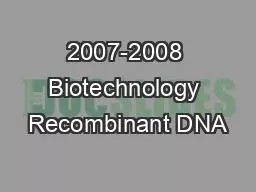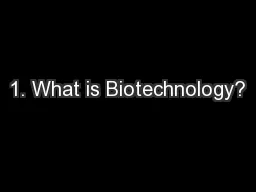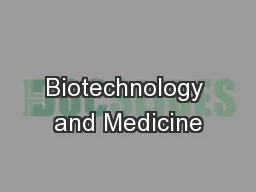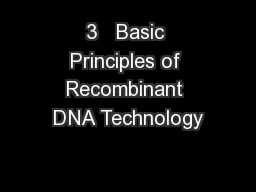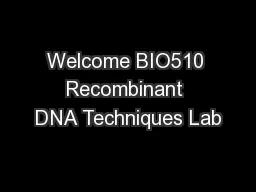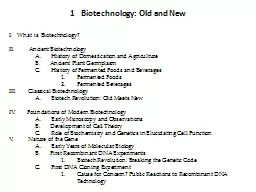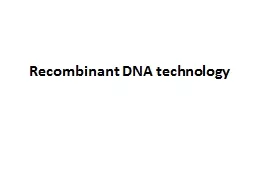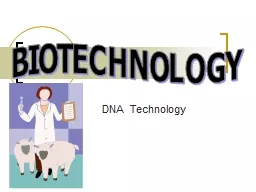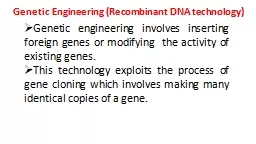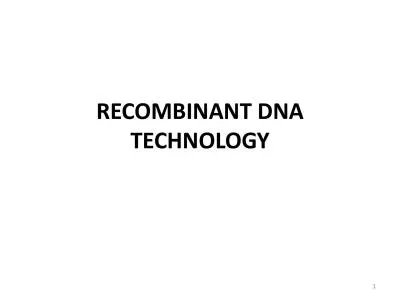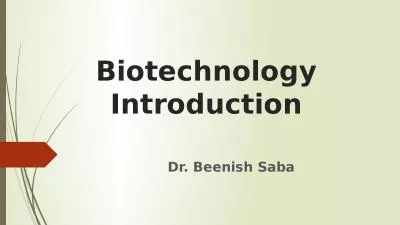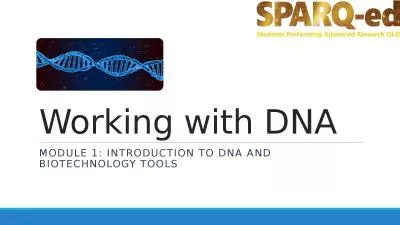PPT-2007-2008 Biotechnology Recombinant DNA
Author : funname | Published Date : 2020-06-16
Taking DNA from two sources and combining then into one molecule Occurs naturally by viral transduction bacterial transformation bacterial conjugation Biotechnology
Presentation Embed Code
Download Presentation
Download Presentation The PPT/PDF document "2007-2008 Biotechnology Recombinant DNA" is the property of its rightful owner. Permission is granted to download and print the materials on this website for personal, non-commercial use only, and to display it on your personal computer provided you do not modify the materials and that you retain all copyright notices contained in the materials. By downloading content from our website, you accept the terms of this agreement.
2007-2008 Biotechnology Recombinant DNA: Transcript
Download Rules Of Document
"2007-2008 Biotechnology Recombinant DNA"The content belongs to its owner. You may download and print it for personal use, without modification, and keep all copyright notices. By downloading, you agree to these terms.
Related Documents

